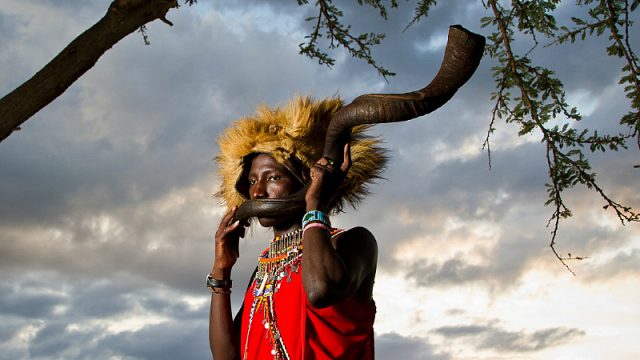Stuart Butler, a writer and photographer who’s covered Africa for more than two decades, recently decided to walk across Maasai lands in Kenya in order to gain a more in-depth understanding of the impact of the 21st century lifestyle, conservation, political pressures and tourism on contemporary Maasai people. He started walking with a Maasai companion on May 25, 2015 and plans to finish at the end of June. (To get more background on the reason for his journey, click here.) Here is a dispatch from his third week on the road.
At the end of last week I was in the Lekanka hills hearing stories about how the last Maasai moran had fought lions to prove their manhood. This week though I’ve mainly been seeing how tourism and a few visionary people have been changing Maasai life.
Most of the week has been spent in Sekenani, the village that sits at the main entrance to the Masai Mara National Reserve, staying with Maasai friends in their manyatta. Here I met up with my old friend James Ole Lesaloi, a man who, having grown up watching endless streams of safari vehicles — and the big dollars they represent — pour into the reserve, had wondered why his community never seemed to benefit from this tourist windfall. He vowed to do something to improve the lot of the Sekenani Maasai community. Read his story here.
One of the saddest Sekenani days was spent at a girls’ shelter, where Maasai girls as young as five came to live after being rescued from forced circumcisions, arranged marriages (often to men many years older) and even, in the case of the youngest, when they were given up to another family as part of a marriage dowry. Although all the girls said they were pleased to be out of those situations, they also, across the board and no matter what their family had done to them, said they missed their parents and siblings. This wasn’t the only time I was to encounter such stories. A couple of days ago I met a policeman who, over the past three years, had rescued around 450 girls from similar situations – often at his own expense and during his own time.
I spent another day at one of the ‘cultural’ villages that line the road to the park. Here I learnt of the scam that many cheaper, and rather immoral, safari companies use, when they encourage their guests to visit a Maasai manyatta. A fee of around US$20-30 is charged per person, but the village only takes around $5 per person and the driver pockets the remainder. If the village refuses to play, then the driver simply stops taking tourists there and tells tourists the manyattas are dangerous because of terrorists or disease.
I’ve now left Sekenani and am finally in the conservancies where I’m walking with herds of herbivores and trying to avoid getting overly close to large, toothy creatures…
Click here to read about week 1 of Stuart’s journey.
Click here to read about week 2 of Stuart’s journey.



